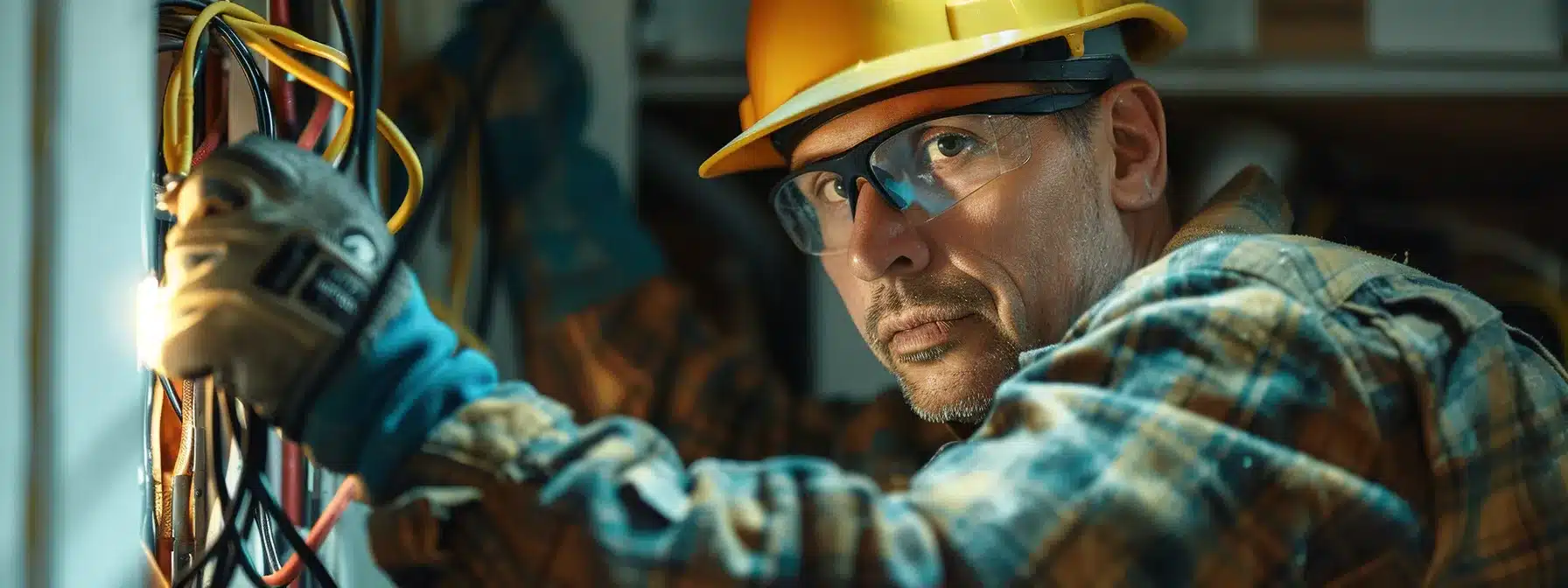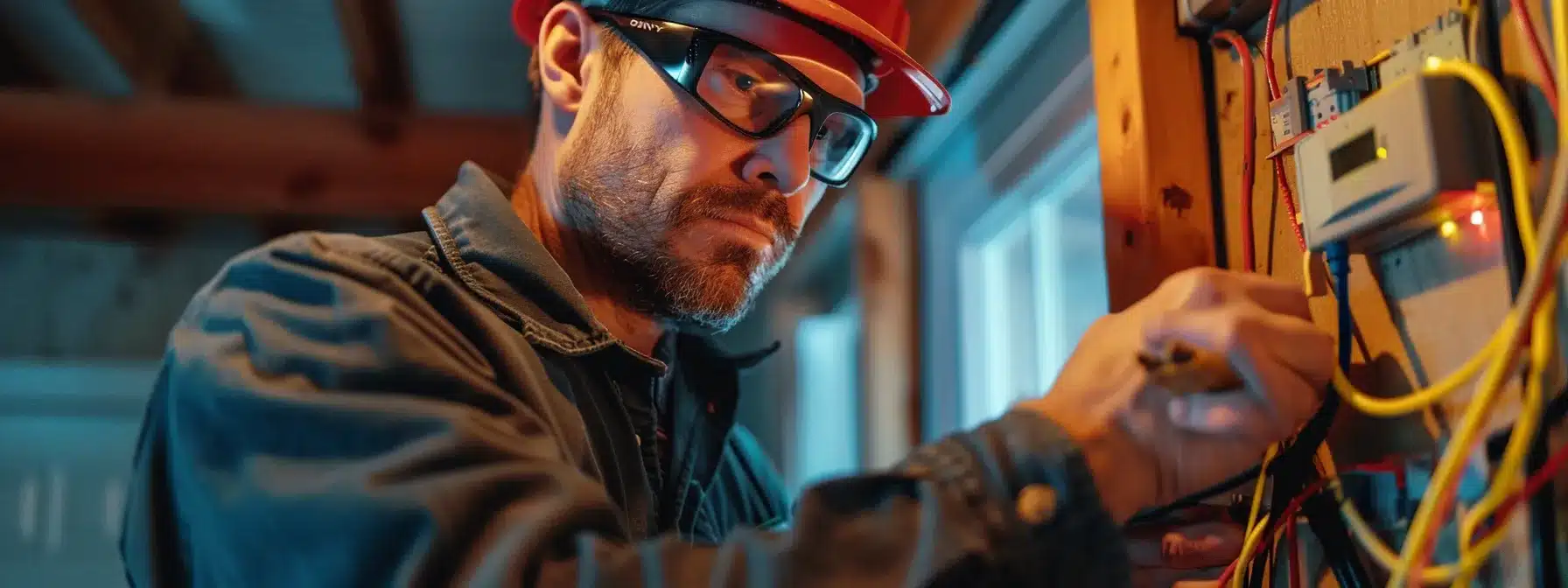Electrical fires pose a significant threat to homes, but homeowners can take proactive steps to safeguard their properties. From faulty wiring to overloaded power strips, numerous factors can contribute to these dangerous situations. Even seemingly harmless appliances like toasters can become fire hazards if not properly maintained or used. In this article, we’ll explore essential strategies to protect your home from electrical fires, including when to call an emergency electrician and how to handle common household items containing sodium. Keep reading to learn how you can create a safer living environment for you and your family.
Key Takeaways
- Regular electrical inspections help identify potential fire hazards in homes
- Professional electricians are crucial for safely replacing worn-out wiring
- Arc fault circuit interrupters (AFCIs) provide advanced protection against electrical fires
- Keeping electrical devices away from water sources is essential for safety
- Proper ventilation and avoiding overcrowded power strips prevent overheating of electronic devices
Identify and Replace Any Worn-Out Electrical Wires

Worn-out electrical wires pose a significant fire hazard in homes. An annual electrical safety inspection helps identify potential dangers before they escalate. Homeowners should look for signs of wear or damage, but replacing wiring requires specialized knowledge and skills. It’s crucial to hire a professional emergency electrician for these tasks to ensure safety and prevent injury. They can also advise on proper extension cord usage and other electrical safety measures to keep your home protected.
Inspect Wiring for Signs of Wear or Damage Annually
Regular inspections of electrical wiring play a crucial role in maintaining electrical fire safety. Homeowners should make it a habit to visually check exposed wires, outlets, and appliances for signs of wear or damage at least once a year. This proactive approach can help identify potential electrical faults before they escalate into dangerous situations.
During these annual inspections, it’s important to look for frayed cords, loose connections, or discolored outlets. These can be indicators of underlying issues that may lead to electrical fires if left unaddressed. Additionally, checking the functionality of smoke detectors and installing specialized electrical fire sensors can provide an extra layer of protection for your home.
While visual inspections are helpful, they don’t replace the expertise of a professional electrician. Homeowners should consider scheduling annual electrical safety inspections with a licensed professional to thoroughly assess the condition of their home’s wiring system. This ensures that hidden issues are detected and addressed promptly, reducing the risk of electrical fires:
Hire a Professional Electrician for Replacement Tasks
Replacing worn-out electrical wires demands the expertise of a professional electrician to ensure fire safety. These skilled professionals conduct thorough inspections to identify potential hazards and replace faulty wiring before it becomes a serious threat. They possess the knowledge to handle complex electrical systems safely and efficiently.
A licensed electrician can spot signs of overheating or damage that may not be visible to the untrained eye. They use specialized tools and techniques to assess the condition of your home’s wiring, including checking for loose connections or outdated components. Their expertise helps prevent electrical fires and ensures your home’s electrical system meets current safety standards.
Professional electricians also know how to properly dispose of old wiring and can advise on fire safety measures, such as the correct use of sodium bicarbonate fire extinguishers for electrical fires. By hiring a qualified electrician, homeowners can have peace of mind knowing their electrical system is in safe, capable hands.
The safety of your home’s electrical system doesn’t stop at replacing worn-out wires. Let’s take your protection to the next level with a crucial upgrade that could save lives.
Install Arc Fault Circuit Interrupters (AFCIs) in Your Home

Arc Fault Circuit Interrupters (AFCIs) are crucial safeguards against electrical fires in homes. These devices detect dangerous electrical arcing, which can occur in damaged wiring, faulty appliances, or overloaded circuits. Unlike traditional circuit breakers or surge protectors, AFCIs can prevent fires caused by issues like loose connections or damaged insulation. They’re especially important in areas where space heaters or other high-draw appliances are used. AFCIs work by cutting off power when they sense an arc fault, stopping potential fires before they start. This technology is particularly effective in preventing short circuits that could lead to fires, which thrive on oxygen and electrical energy. Installing AFCIs requires the expertise of a licensed electrician to ensure proper function and compliance with local electrical codes.
Understand What AFCIs Do and Their Importance
Arc Fault Circuit Interrupters (AFCIs) play a vital role in protecting property from electrical fires. These devices monitor electrical circuits for signs of dangerous arcing, which can occur due to damaged wiring or faulty appliances. Unlike standard circuit breakers, AFCIs can detect and respond to arcing faults before they escalate into fire hazards.
AFCIs reduce the risk of electrical fires by interrupting power when they detect abnormal arcing. This technology is particularly important in homes with older wiring or those that use high-draw appliances like air conditioning units. By preventing electrical fires, AFCIs also help minimize the danger of carbon monoxide poisoning, which can result from smoldering fires.
Understanding the importance of AFCIs is crucial for homeowners seeking to enhance their electrical safety. These devices offer protection beyond what traditional circuit breakers provide, making them an essential component of modern electrical systems. Here’s a comparison of AFCI protection versus standard circuit breakers:
Get a Licensed Electrician to Install AFCIs in Your Home
Installing Arc Fault Circuit Interrupters (AFCIs) requires the expertise of a licensed electrician to ensure proper integration with your home’s electrical system. These professionals understand the intricacies of fire prevention and can identify potential hazards in your existing wiring. They’ll assess your home’s electrical maintenance needs and recommend the most effective AFCI placement for optimal protection.
A qualified electrician will inspect your home’s electrical panels, outlets, and cords to determine the best locations for AFCI installation. They’ll ensure that AFCIs are installed correctly, reducing the risk of electrical fires that could spread to carpets and other flammable materials. Their expertise helps homeowners avoid common mistakes that could compromise the effectiveness of these safety devices.
During the installation process, the electrician may also identify other electrical issues that need attention. They can address problems with outdated wiring or overloaded circuits, further enhancing your home’s overall electrical safety. By entrusting AFCI installation to a professional, you’re taking a crucial step in protecting your home and family from the dangers of electrical fires.
Safety doesn’t stop at circuit protection. Let’s explore another crucial aspect of electrical safety in your home.
Keep Your Appliances Away From Water Sources

Keeping electrical appliances away from water sources is a critical step in preventing electrical fires and shock hazards. Water and electricity are a dangerous combination that can lead to short circuits, sparks, and potentially devastating fires. To enhance safety, homeowners should maintain a safe distance between water sources and electrical devices, and use Ground Fault Circuit Interrupters (GFCIs) in areas prone to moisture. These precautions, along with having a fire blanket and appropriate fire extinguisher readily available, can significantly reduce the risk of electrical fires. By implementing these safety measures, residents can create a safer living environment and be better prepared to handle potential fire hazards.
Maintain a Safe Distance Between Water and Electrical Devices
Maintaining a safe distance between water and electrical devices is crucial for home electrical safety. Homeowners should keep appliances like clothes dryers away from areas prone to moisture or water splashes. This simple precaution can prevent dangerous situations where water might come into contact with high-voltage equipment.
Firefighters often stress the importance of creating a buffer zone between water sources and electrical outlets or devices. This practice helps reduce the risk of short circuits and electrical fires, which can spread rapidly through a home. The sound of a “ting” from an electrical device near water should serve as a warning sign to immediately unplug and relocate the item.
When arranging electrical appliances in the home, consider potential water sources such as sinks, bathtubs, and even windows that might allow rain to enter. By strategically placing devices away from these areas, homeowners can significantly decrease the likelihood of water-related electrical accidents and create a safer living environment.
Use Ground Fault Circuit Interrupters (GFCIs) for Added Safety
Ground Fault Circuit Interrupters (GFCIs) offer crucial protection against electrical shocks and fires in areas where water and electricity might meet. These devices monitor the power supply and quickly cut off electricity if they detect an imbalance, preventing potentially dangerous situations. The National Fire Protection Association recommends installing GFCIs in kitchens, bathrooms, laundry rooms, and outdoor areas to enhance home safety.
Homeowners should ensure that GFCIs are installed on outlets near sinks, in areas where appliance cords might come into contact with water, and around light fixtures in damp locations. These devices can detect even small amounts of electricity leaking to ground, shutting off power before it can cause harm. Regular testing of GFCIs helps maintain their effectiveness in protecting against electrical hazards.
While GFCIs provide an extra layer of safety, they don’t replace the need for caution around water and electricity. The fire department advises keeping electrical devices away from water sources whenever possible, even with GFCI protection in place. This combined approach of using safety devices and practicing careful habits creates a more secure home environment.
Water and electricity don’t mix, but neither do heat and electronics. Let’s explore another crucial aspect of electrical safety that often goes overlooked.
Ensure Proper Space for Heat Dissipation of Electronic Devices

Proper heat dissipation is crucial for preventing electrical fires caused by overheated electronic devices. As homes become increasingly connected, the risk of overloading electrical wiring and fuses grows. Ensuring adequate space around electronics allows for better air flow, reducing the chance of overheating and potential emergencies. This section explores how to avoid overcrowding power strips and maintain proper ventilation for devices, helping to regulate electric current flow and minimize fire hazards. By following these guidelines, homeowners can significantly reduce the risk of electrical fires and create a safer living environment.
Avoid Overcrowding of Devices on Power Strips
Overcrowding power strips with too many devices can lead to overheating and increase the risk of electrical fires. Homeowners should limit the number of items plugged into a single power strip, especially high-wattage appliances. This practice helps prevent excessive current draw and reduces the chances of overloading the electrical circuit.
Spreading devices across multiple power strips or outlets allows for better heat dissipation and improved safety. Users should pay attention to the total wattage of connected devices, ensuring it doesn’t exceed the power strip‘s capacity. Regularly checking for warm spots on power strips or outlets can help identify potential overheating issues before they become dangerous.
When arranging electronic devices, leaving space between them promotes proper airflow and prevents heat buildup. This simple step can significantly reduce the risk of fire hazards caused by overheated electronics. Homeowners should also avoid placing power strips in enclosed spaces or under carpets, where heat can accumulate and create unsafe conditions.
Allow Adequate Air Flow Around Electronics to Prevent Overheating
Providing adequate airflow around electronic devices prevents overheating and reduces fire risks. Homeowners should position electronics with space on all sides, allowing heat to dissipate effectively. This simple practice helps maintain safe operating temperatures for devices like computers, gaming consoles, and home entertainment systems.
Avoid placing electronics in enclosed spaces or stacking them on top of each other. These arrangements can trap heat and lead to dangerous temperature increases. Instead, use open shelving or stands that promote air circulation, keeping devices cool during operation.
Regular cleaning of vents and fans on electronic devices ensures optimal airflow. Dust buildup can impede heat dissipation, causing devices to work harder and potentially overheat. By maintaining clean, unobstructed ventilation, homeowners can extend the life of their electronics and reduce the risk of electrical fires.
Electrical safety extends beyond wiring and devices. Let’s shift our focus to another common household appliance that requires vigilant maintenance for fire prevention.
Regularly Clean Lint Filters and Vents in Dryers

Dryers pose a significant electrical fire risk in homes due to lint accumulation. Regular cleaning of lint filters and vents is crucial for preventing these hazards. Lint buildup can obstruct airflow, causing the dryer to overheat and potentially ignite nearby flammable materials. By implementing a consistent cleaning routine and scheduling professional vent cleanings, homeowners can significantly reduce the risk of dryer-related fires. This proactive approach not only enhances safety but also improves the appliance‘s efficiency and longevity.
Clean Lint Filters After Every Use as Per Manufacturer’s Instructions
Cleaning lint filters after every use is a crucial step in maintaining dryer safety and efficiency. Manufacturers design these filters to catch loose fibers and debris from clothing, preventing them from clogging the dryer’s ventilation system. Following the manufacturer’s instructions ensures proper cleaning techniques and helps extend the life of the appliance.
Most dryers have easily accessible lint filters that users can remove and clean by hand. Gently scraping away lint and debris with fingers or a soft brush typically suffices for regular maintenance. Some manufacturers recommend occasional washing of the filter with mild soap and water to remove buildup that simple scraping might miss.
Homeowners should make lint filter cleaning a habit, incorporating it into their laundry routine. This simple task takes only a few moments but plays a significant role in preventing dryer fires and maintaining optimal performance. By keeping lint filters clean, users ensure proper airflow and reduce the strain on their dryer’s heating elements and motor.
Schedule Vent Cleaning to Avoid Lint Buildup Annually
Annual vent cleaning prevents dangerous lint buildup in dryer exhaust systems. Professional cleaners use specialized tools to remove accumulated lint and debris from the entire vent line, reducing fire risks. This thorough cleaning goes beyond what homeowners can achieve with regular maintenance.
Scheduling yearly vent cleanings helps maintain optimal dryer performance and energy efficiency. Clean vents allow for proper airflow, reducing drying times and lowering energy costs. Homeowners should mark their calendars for annual cleanings to ensure consistent maintenance.
Professional vent cleaning services often include inspections for potential issues like damaged ducts or improper venting. These experts can identify and address problems that might lead to fire hazards or inefficient dryer operation. By investing in annual vent cleanings, homeowners protect their property and ensure their dryers function safely and effectively.
Conclusion
Safeguarding your home against electrical fires requires vigilance and proactive measures. Regularly inspect and replace worn-out wiring, install Arc Fault Circuit Interrupters, and keep appliances away from water sources to minimize fire risks. Ensure proper heat dissipation for electronic devices and maintain clean lint filters and vents in dryers to prevent overheating. By following these guidelines and seeking professional help when needed, homeowners can significantly reduce the risk of electrical fires and create a safer living environment for their families.

